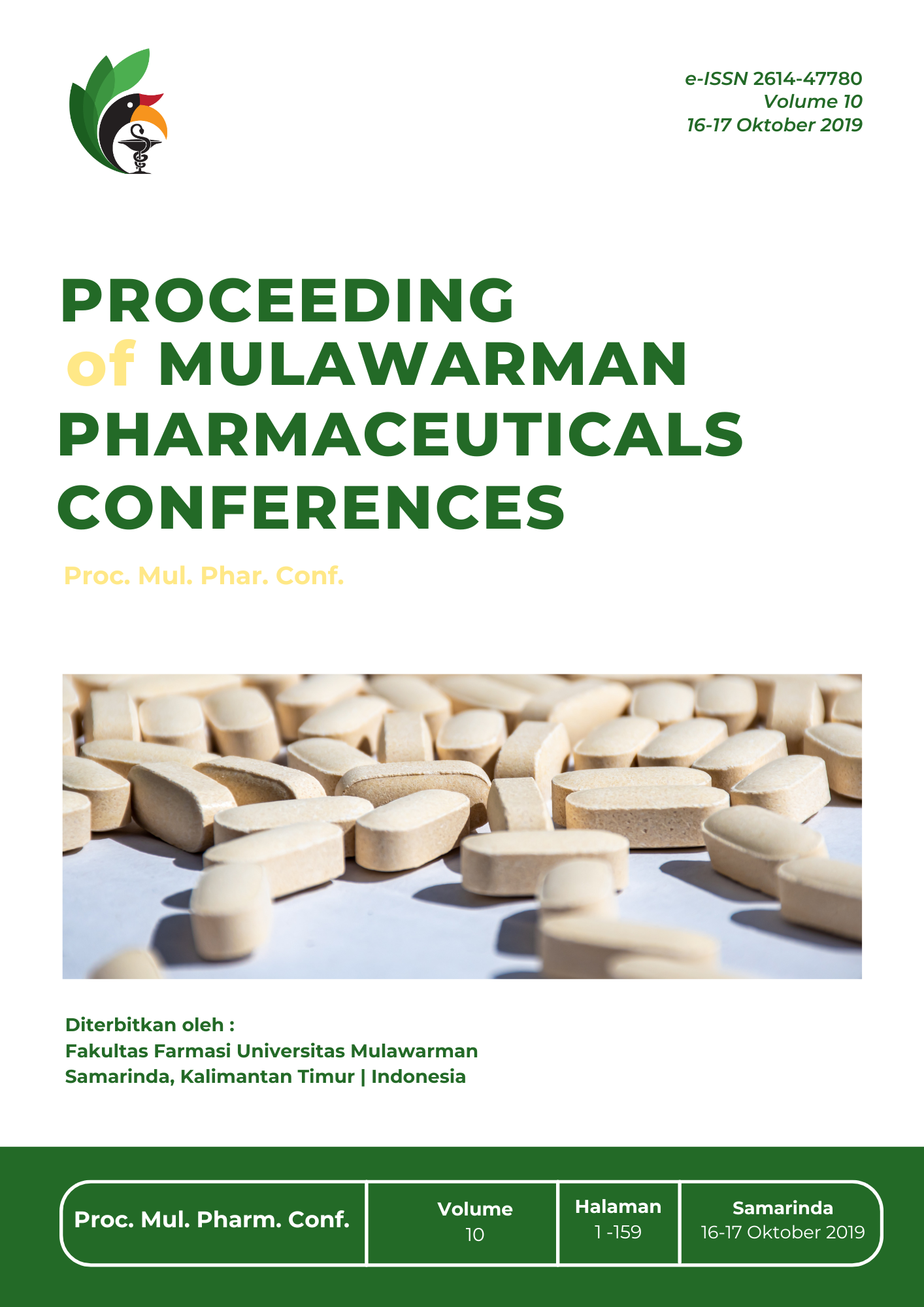Ekstraksi Polifenol Total dari Daun Kadamba (Mitragyna Speciosa Korth.) Menggunakan Malic Acid-Glucose Based Microwave Assisted Extraction
DOI:
https://doi.org/10.30872/mpc.v10i.179Keywords:
Glucose, Green solvent, Kadamba Leaf (Mitragyna Speciosa Korth.), Malic Acid, microwave extractionAbstract
This study aims to determine the effect of the use of malic acid-glucose based microwave assited extraction (MAE) methods on total polyphenol extraction from kadamba leaves (Mitragyna Speciosa Korth). Samples that have been dried in the extraction using solvents (green solvent) Malic Acid-Glucose with a ratio of 1: 1 and 1: 3 g/g in several conditions including, microwave strength 50% for 10 minutes with a sample ratio and a solvent of 1:10 g/mL. Then the extract solution obtained was measured in total polyphenol levels using the folin ciocalteu (FC) reagent and the absorbance was measured at a wavelength of 791 nm using a UV-vis spectrophotometer. Based on the results of the study obtained levels of polyphenols from each condition of the solvent used is 258mg GAE/g sample (1:1 g/g solvent) and 292mg GAE /g sample (1: 3 g / g solvent). From this study it can be concluded that the method of malic acid-glucose based microwave assited extraction can be used to extract polyphenol compounds from Kadamba leaves quickly, easily and efficiently.
References
[1] Bobo-García, G., Davidov-Pardo, G., Arroqui, C., Vírseda, P., Marín-Arroyo, M. R., & Navarro, M. (2014). Intra-Laboratory validation of microplate methods for total phenolic content and antioxidant activity on polyphenolic extracts, and comparison with conventional spectrophotometric methods. Journal of the Science of Food and Agriculture, 95, 204–209. https://doi.org/10.1002/jsfa.6706
[2] Depkes RI. (1989). Parameter standar umum ekstrak tumbuhan obat, Jakarta: Departement Kesehatan Republik Indonesia. Edisi V, 9–11, 16. https://doi.org/615.32
[3] Handayani, Dwi Handayani Mun’im, A., & Anna S. Ranti. (2014). Optimasi ekstraksi ampas teh hijau (Camellia sinensis) menggunakan metode microwave assisted extraction untuk menghasilkan ekstrak teh hijau. Traditional Medicine Journal, 19, 29–35. https://doi.org/10.1080/10440040903303504
[4] Kurniasari, L., Hartati, I., & Ratnani, R. D. (2008). Kajian ekstraksi minyak jahe menggunakan Microwave Assisted Extraction (MAE) Jahe. Momentum, 4(1952), 47–52.
[5] Hemalatha, S., Mandal, V., & Mohan, Y. (2007). Microwave assisted extraction - An innovative and promising extraction tool for medicinal plant research. Pharmacognosy Reviews, 1(1), 7–18.
[6] Ahmad, I., Yanuar, A., Mulia, K., & Mun’im, A. (2017). Optimization of ionic liquid-based microwave-assisted extraction of polyphenolic content from Peperomia pellucida (L) Kunth using response surface methodology. Asian Pacific Journal of Tropical Biomedicine, 7(7), 660–665. https://doi.org/10.1016/j.apjtb.2017.06.010
[7] Yuntao, D., Jaapvan, S., Geert Jan, W., Robert, V., & Young Hae, C. (2013). Natural deep eutectic solvents as new potential media for green technology. Analytica Chimica Acta, 766(2013), 61–68. https://doi.org/10.1016/j.aca.2012.12.019
[8] Zuo-fu, W., Xi-qing, W., Xiao, P., Wei, W., & Chun-jian, Z. (2014). Fast and green extraction and separation of main bioactive flavonoids from Radix Scutellariae. Industrial Crops & Products. https://doi.org/10.1016/j.indcrop.2014.10.013
Downloads
Published
Issue
Section
License
Copyright (c) 2019 Andi Yusniah, Yuspian Nur, Islamudin Ahmad (Author)

This work is licensed under a Creative Commons Attribution-NonCommercial 4.0 International License.


